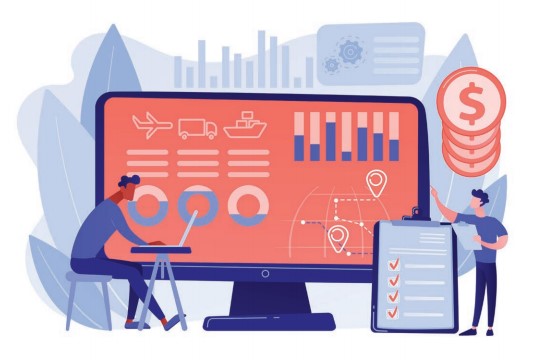Data may not be considered a revolutionary concept, but today it is considered a fundamental component of digital transformation
Data is the key to achieving breakthroughs in supply chain management that the industry once considered impossible. Now, with the advent of the metaverse, the lines between the digital and physical worlds continue to blur. To compose a supply chain agile enough and prepared for such a future world, organisations must invest in effective data analytics to mine data for valuable, proactive insights and accelerate intelligent decision making.
As we come upon the two-year mark since the onset of the pandemic, organisations are keen to digitally transform and adopt intelligent supply chain management. On top of pandemic disruptions, businesses across sectors are also contending with growing labour shortages, supply shortages and rising costs. As disruption has become an everyday occurrence to supply chains, chief supply chain officers (CSCOs) are under growing pressure to capture real-time data, analyse it and respond quickly to mitigate risk. Supply chains must adapt for continued agility, resilience and transparency.
In its 2021 Future of Supply Chain Survey, Gartner discovered that 43 percent of enterprises will continue to digitalise and integrate innovative technology into enterprise-wide systems. This means that in the coming year, the ability to augment operations and decision-making with data analytics will prove to be a transformative and highly favoured capability.
Digital reinvention is today’s necessity
While transformation is an ambitious undertaking, the benefits go well beyond improving supply chain performance and profitability. A late 2020 Gartner survey showed that nearly 70 percent of companies surveyed accelerated their digital road maps during the pandemic. That being said, digital reinvention in the supply chain is now a necessity.
Myriad use cases for supply chain analytics exist – and the number will only continue to grow as forward-thinking leaders embrace the opportunity for human and machine collaboration. Consistently ranked as one of the top five corporate supply chains, Schneider Electric leverages a supply chain data platform within its control tower to integrate internal data with external data from partner ecosystems in real-time. By unlocking newfound value in analytics, Schneider Electric achieves full visibility of its end-to-end supply chain. Ultimately, this allows the company to boost agility, effectively manage supplier relations, extend visibility and support intelligent decision-making.
The intelligent building blocks
Data-based decisions require a fundamental change in how supply chain organisations think about data. Implementing data analytics is not solely a matter of tacking on new technologies, but rather a series of digital initiatives to capture the full value of data analytics and intelligence. To make this shift, start by looking at the following:
- Link the business strategy: Linking business priorities to investments with a transformation road map – not IT stack improvements – helps drive successful transformation across the enterprise.
- An agile method: A complete digital transformation is a multi-year project, making an iterative, agile approach the best method for success. With quick wins and a clearly defined strategy, organisations can minimise future losses and demonstrate positive ROI.
- Implementation and integration: An integrated, holistic approach can address the opportunities and constraints of all stakeholders, from procurement to sales. Data intelligence drives integration across once-siloed systems, with added workflows helping turn insights into actions.
- A partner ecosystem: Participating in an ecosystem is crucial to mitigating risk. Supply chain mapping across stakeholders improves internal and external collaboration to benefit customers and enhance end-to-end visibility. In conjunction with data-powered insights, operations can better predict demand and cognitively source needed supplies.
- Embrace the metaverse: Delivering predictive insights and fostering intelligence across supply chain networks will be compounded exponentially with the introduction of the metaverse. Simulating real-world models with synthetic data, IoT device data and more will prove to reduce development times and risk, achieve higher operational efficiency and improve resilience.
Where do we go from here?
Supply chain transformation happens by unlocking the value of your analytics with processes, technology and experience. A lack of capabilities and a structured approach are holding many companies back. In the end, transformation is not immediate; it’s rather a proactive journey. In due time, harmonising analytics can put organisations on a path to intelligent supply chain management and the ability to compete with businesses that are setting the bar. •

.jpg)


